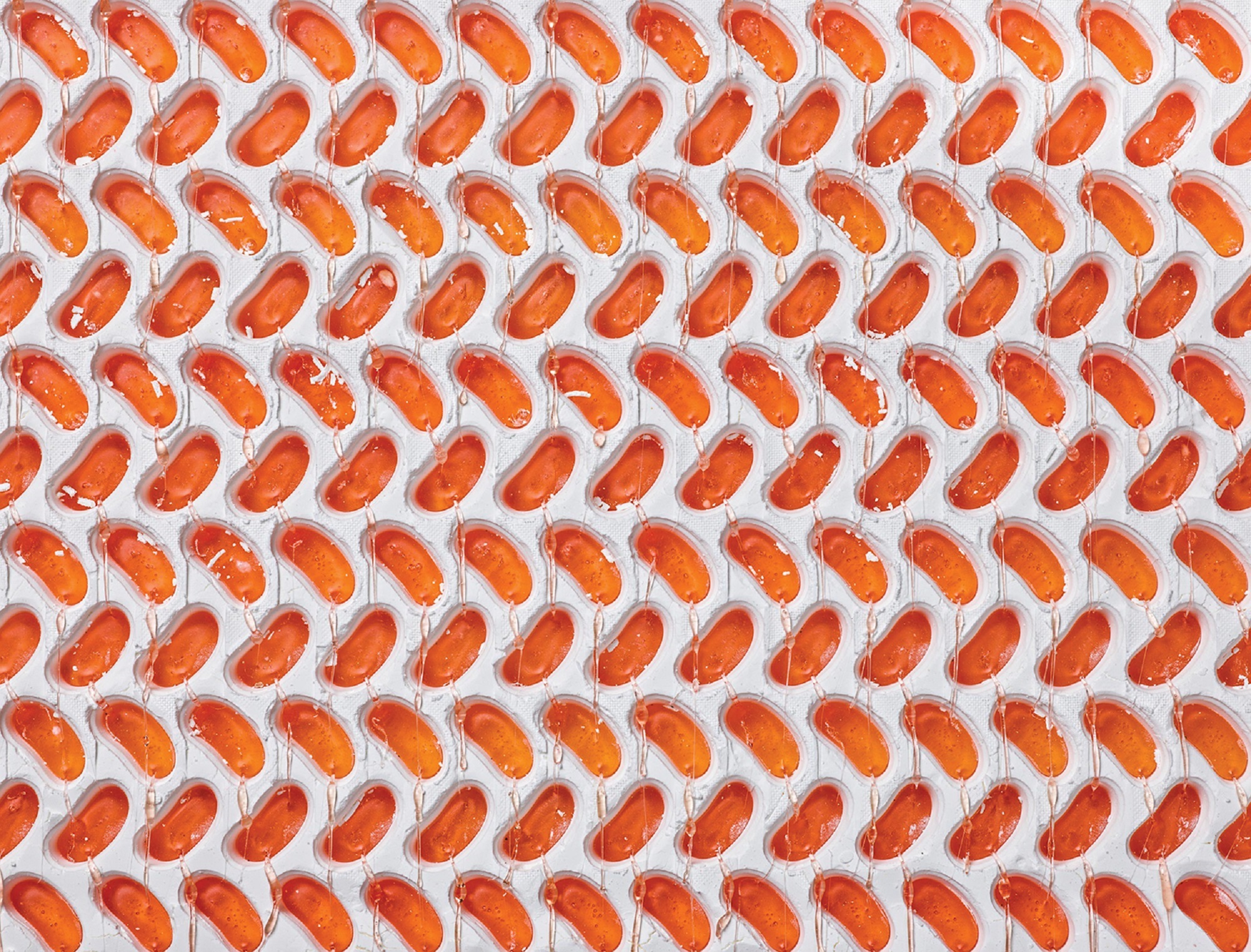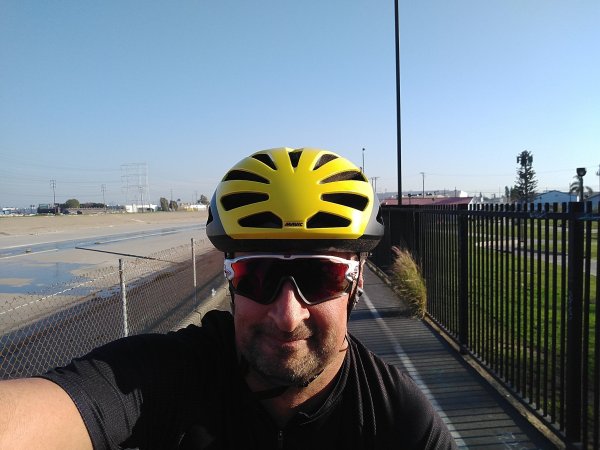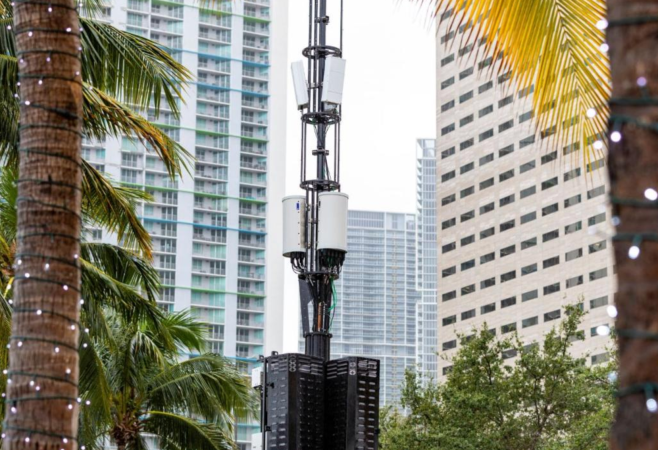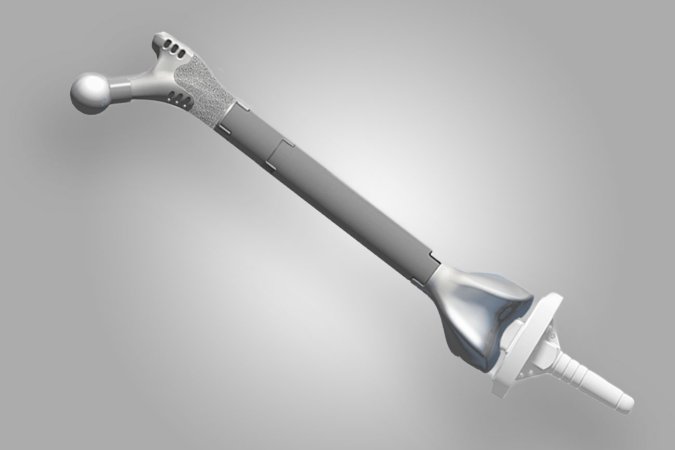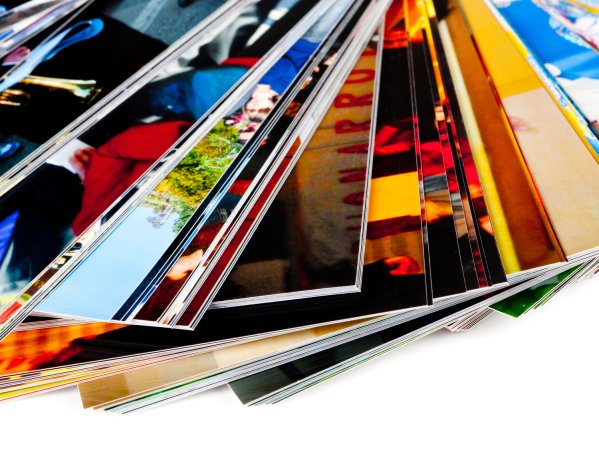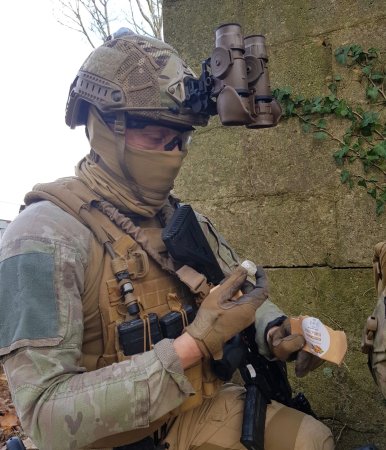CRAFTING A PERFECT JELLY BEAN takes a week or more. That’s because—at least as far as Jelly Belly is concerned—flavor demands time. Each bite-size gem starts with a slurry of sugar, water, cornstarch, and corn syrup to which candymakers add juices, purees, and other ingredients they want the finished treats to evoke. Watermelon candies start with bright pink juice, coconut ones require fresh flakes, pureed fruit provides the sweet tang of peach, jalapeños deliver the burn of true chilis, and so on for every one of the brand’s 100-plus flavors. As the goodies wend their way through the company’s 250,000-square-foot factory an hour north of San Francisco, a team of about 200 confectioners slather on at least six more layers of flavor and shine. Around two dozen varieties meander through the wonderland at any given time, netting some 1.25 million tasty temptations every hour.

A machine called a mogul presses a metal form into nonstick starch, creating molds for the pungent jelly bean cores. Each tray holds more than 1,000 dollops of molten sweetness.

Making a bean requires patience, as the candies rest three times during the production process. Their first nap occurs on racks in a room kept above 100ºF, where the morsels cure overnight.

Before tumbling through this sugar shower, the sweets receive a steam bath. The moisture ensures their exteriors are tacky so the granules adhere—a trick that all but guarantees none of them stick to one another.

After resting for up to two days, beans go into spinning drums to get a candy shell. Syrup and sugar provide still more flavor and color. Most match their centers, but some contrast: This red apple tidbit will be crimson with a light middle.

Confectioners dust the beans with sugar between sprinklings of syrup. The last of the three passes is powdered, which creates a smooth, nonstick exterior. All this layering increases the size of each candy by 40 percent.

One more snooze, and then alternating helpings of confectioner’s glaze and carnauba wax stack up the sheen. Team members judge their doneness by hand. They may even enjoy one to ensure the treats, like this berry blue, are just right.

A tube feeds finished beans, like these buttered popcorn gems, into tidy rows on a conveyor belt. They pass through this stamping machine, which emblazons their tummies with Jelly Belly’s logo in white food coloring.

Assortments mix together in a tumbler, which also filters out misshapen treats, known as Belly Flops. Too-small morsels drop through holes in the first roller; perfect ones land on a conveyor below the second; and big’ns get stuck in the third.

Nearly 1,700 individual jelly beans reach the end of the line every second. Single flavors await their fate in bulk in a sweet rainbow row, and factory workers load the glistening bites into boxes for fans of specific varieties.

This story originally ran in the Winter 2021 Taste issue of PopSci. Read more PopSci+ stories.
